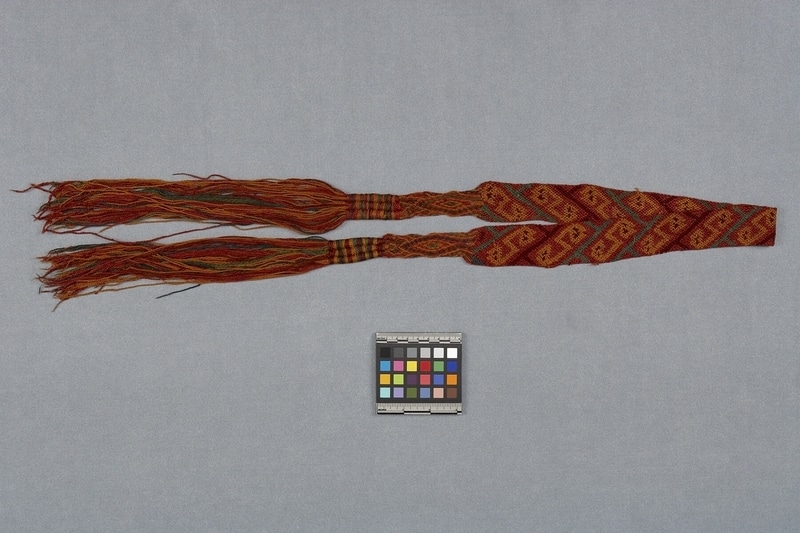Headband Item Number: Sf877 from the MOA: University of British Columbia

Description
The woven headband is narrow with a long fringe at both ends. The central section of the band repeats double headed serpents twelve times in gold, green and two shades of red. The band narrows to sections of oblique twining and weft faced plain weave on grouped warps at both ends. The warps then become long fringes. Z-spun, two plied s yarns.
History Of Use
Similar turban from Ocucaje, Ica Valley, were wrapped around the cotton pillows that form part of false heads for mummy bundles (King). Compact knotting is confined to the south coast area and this time period (King).
Iconographic Meaning
Serpents are frequently depicted on textiles. In the earlier Chavinoid Styles, serpents are used as metaphors for natural body coverings like hair, fur or feathers and also for fabricated body coverings like belts and headdresses. By Early Horizon 9, a great number of over-all serpentine patterns based on textile structure designs appear. This band has a design that derives from the twisted strand. The meaning is underlined by placing a double-headed serpent on each twist of the strand.
Item History
What
Where
- Holding Institution
- MOA: University of British Columbia
- Made in
- Peru
When
- Creation Date
- between 601 BCE and 501 BCE
- Collection Date
- between 1949 and 1966
- Ownership Date
- before May 4, 1981
- Acquisition Date
- on May 4, 1981
Other
- Item Classes
- textiles
- Condition
- good
- Accession Number
- 0711/0379